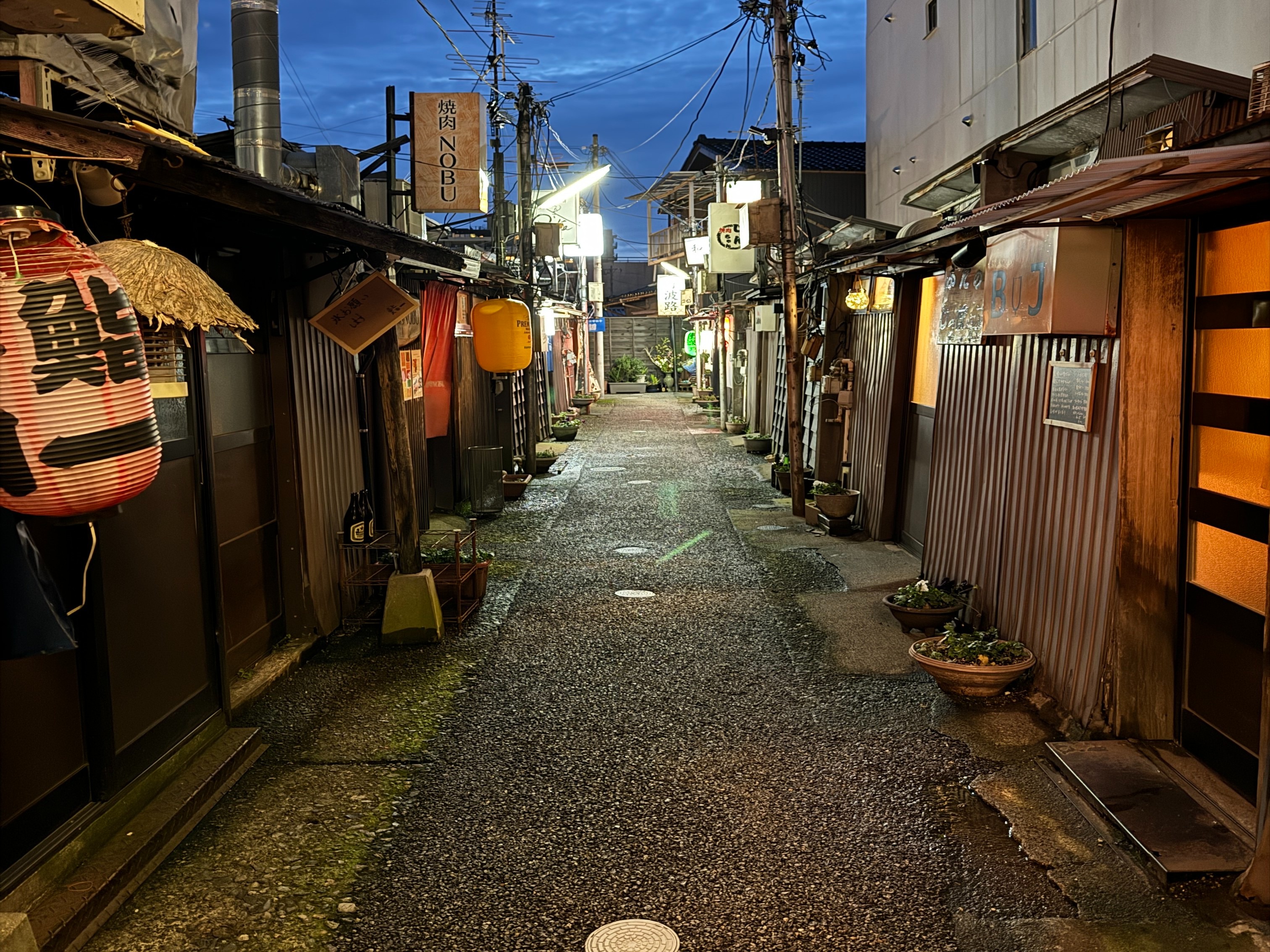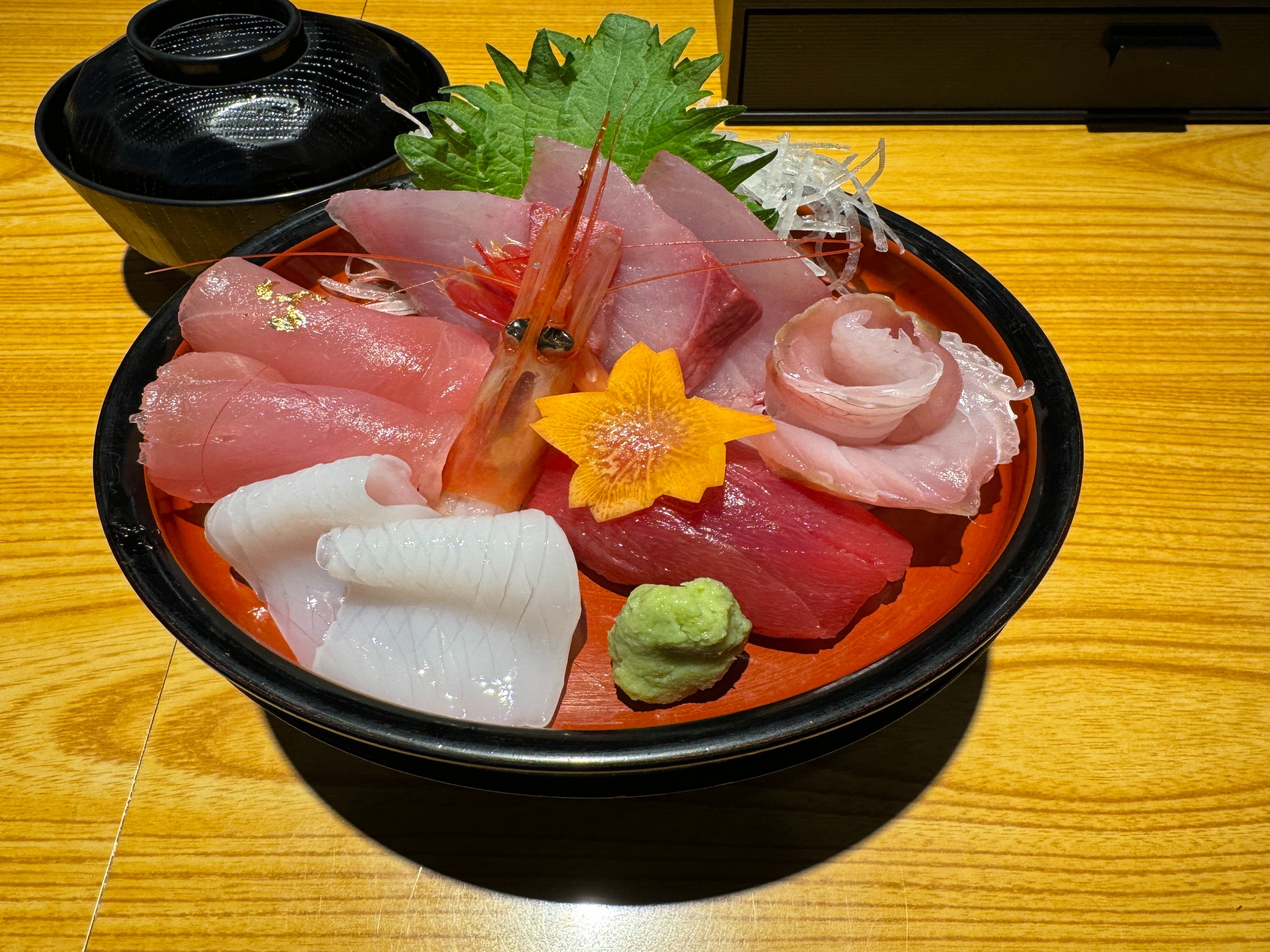
Curator’s statement
Known as Little Kyoto, Kanazawa is undoubtedly one of Japan’s most charming historical cities. Explore its well-preserved samurai and geisha district — without the crowds of Kyoto. Straight from the nearby Sea of Japan, find out why some consider the city to have the freshest seafood in the country. Kanazawa truly embodies the essence of Japan, waiting to be discovered — via a convenient bullet train from Tokyo — by those willing to venture off the beaten path.
The Fora Difference
Book with Marisa to access exclusive perks and experiences on your trip.
Killer perks
Free upgrades, spa credits and more—we got you
Personalized recs
Customized travel planning for your style
Insider knowledge
Expert advice from people who’ve actually been there
Where to stay in Kanazawa, Japan
Unlock perks by contacting Marisa to book your trip.
Things to do in Kanazawa, Japan

Kiguramachi District
Kanazawa stood as one of Japan’s formidable cities during the Edo Period (1603-1868), serving as the stronghold of the Maeda Clan. Remarkably, the city evaded air raids during World War II, luckily preserving its historic core.
Although frequently overlooked by first-time travelers to Japan, Kanazawa proves to be an immensely rewarding destination for those intrigued by history, seafood, gardens and ceramics. So, without further ado:
History
Higashi Chaya District: Take a step back in time and wander the streets of this preserved geisha district, filled with traditional tea houses and shops.
Kanazawa Castle: Explore this symbol of the city's feudal past and home to the powerful Maeda Clan.
Nagamachi: One of Japan's best-preserved samurai districts, Nagamachi maintains the ambiance of the Edo period with its traditional houses and narrow streets, offering a glimpse into the lifestyle of the samurai.
Gardens
Kenrokuen Garden: Spend a day exploring one of Japan's most coveted landscape gardens (and officially one of the Three Great Gardens). It's beautiful all year round but especially during fall’s foliage and spring’s cherry blossom season.
Seafood
Omicho Market: Indulge in a seafood feast at Omicho Market, where you can sample fresh catches of the day from the Sea of Japan. Try local delicacies such as kaisendon (seafood rice bowl) at one of Kanazawa's renowned seafood restaurants.
Ceramics
Kutaniyaki Kosen Kiln: This kiln has a long history of producing Kutani ware, a traditional style of Japanese ceramics.
Ishikawa Kutani Ceramics: Located near the Higashi Chaya District, this shop offers a diverse range of Kutani ware ceramics, from traditional to contemporary designs.
Day Trips
From cultural exploration and outdoor adventures to relaxation and rejuvenation in natural hot springs (onsen), Kanazawa makes for a perfect base to explore the wonderful surrounding area, including:
Shirakawa-go: Explore the UNESCO World Heritage-listed village known for its traditional gassho-zukuri farmhouses.
Takayama: Immerse yourself in the charming streets of this historic town, famous for its beautifully preserved old town area, sake breweries and traditional crafts shops.
Yamanaka Onsen: A hot spring town that runs alongside the dramatic riverside scenery of Kakusenkei Gorge.
Kaga Onsen: Hot spring town surrounded by lush forests and tranquil riverbanks.
Hakusan National Park: Discover the natural beauty of Hakusan National Park, home to Mount Hakusan, one of Japan's three sacred mountains. Enjoy hiking trails, alpine flora and scenic vistas.
Noto Peninsula: Explore the scenic coastal landscapes of the Noto Peninsula, dotted with picturesque fishing villages, sandy beaches and rugged cliffs
Important caveat: A major earthquake devastated the Noto Peninsula on New Year's Day 2024. If you are traveling soon to the area, check for government updates on visiting Noto.
Places to eat & drink in Kanazawa, Japan

Kaisen-don at Omicho Market
Omicho Market: Kanazawa’s main seafood market where you can dine on kaisen-don (seafood rice bowl) for breakfast or lunch.
Kazu Nakashima: Try the delicious fresh fruit mochi or have a matcha tea for a snack in the Higashichaya district.
Hibi Sakanazuki Toboku: Ten kaiseki seafood dishes will allow you to try the best of Kanazawa.
Sushi Asanogawa: Delectable omakase meal in the Higashichaya district on the river.
Maimon Sushi: Located within Kanazawa Station, this no-frills sushi restaurant is manned by the kindest local you will meet (who also speaks perfect English with an unforgettable voice).
Sakai: Just off the samurai district in Kiguramachi neighborhood, you’ll find this intimate authentic restaurant focused on sushi and seafood.
Wasabi Izakaya: Wonderful selection of local sushi at this cozy izakaya not far from the train station.
Kaikaya: Situated near Kenrokuen Garden, Kaikaya offers a modern twist on traditional seafood dishes.
Need to know
With the introduction of the bullet train in 2015, Kanazawa and the greater Hokuriku region are now incredibly easy to reach from Tokyo. The Hokuriku Shinkansen takes just about two and a half hours.

Travel Advisor
Marisa Schwab

Get in touch with Marisa
Did you like this guide? Reach out to customize and book your own experience. Or, just to chat about travel in general.
You can expect a response from Marisa within 1–2 business days. You’ll also be subscribed to our traveler newsletter (you can unsubscribe at any time).
This guide is part of our ongoing series on travel to Japan. For more travel tips, check out Fora Advisor Adeline Kuroki's guide, History and Culture in Japan.